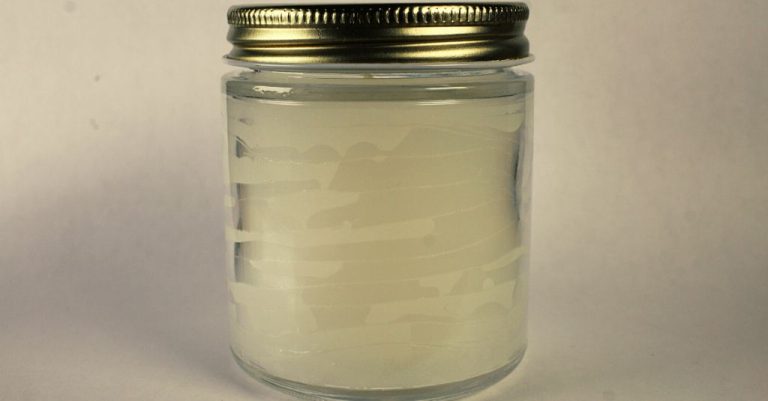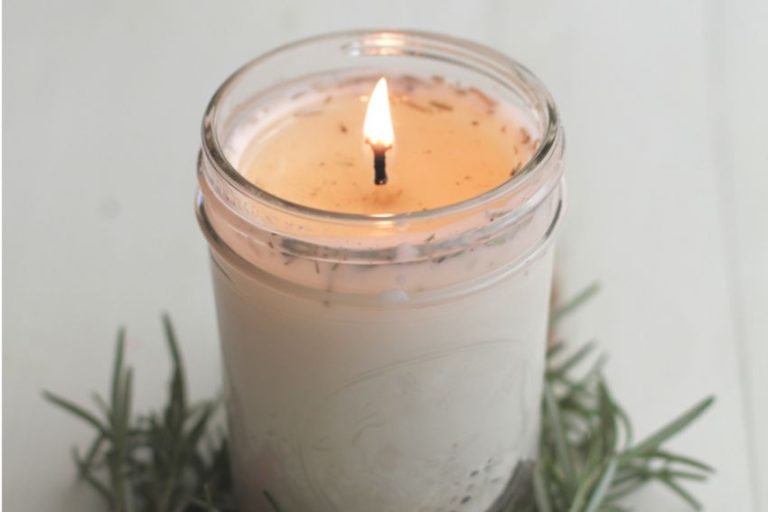What Is The Best Wick For Soy Paraffin Blend?
Soy paraffin blend candles have become an increasingly popular option for candle making in recent years. As the names suggests, these candles are made from a mixture of soy wax and paraffin wax. By blending the two types of wax, candle makers are able to achieve desirable qualities from each. Soy wax is a natural, renewable resource that comes from soybeans. It’s appreciated for being environmentally friendly and biodegradable. Paraffin wax is a petroleum byproduct that offers excellent scent throw and burn properties. Combining the two creates candles that burn cleanly and evenly while also being more sustainable.
The blend ratio can be adjusted based on preference, but a typical soy paraffin blend contains a higher percentage of soy wax. A 60/40 or 70/30 soy to paraffin ratio is common. This takes advantage of soy’s sustainable and natural benefits while utilizing just enough paraffin to enhance burn performance. The result is a smooth-burning, eco-conscious candle that many consumers now look for.
Soy Wax Overview
Soy wax is made from hydrogenated soybean oil. It is composed of triglycerides, which are fatty acids that have been saturated with hydrogen. The main fatty acids in soybean oil are:
- Palmitic acid – 11%
- Stearic acid – 4%
- Oleic acid – 23%
- Linoleic acid – 54%
- Linolenic acid – 8%
The high content of linoleic and linolenic acids gives soy wax excellent crystallization properties. The wax has a lower melting point compared to paraffin, ranging from 135 to 145°F. It’s also softer and more flexible when set. Soy wax has become popular for candle making because it’s made from a renewable resource and is biodegradable.
Paraffin Wax Overview
Paraffin wax is derived from petroleum and is composed of saturated hydrocarbons. It is typically hard and brittle at room temperature and becomes liquid when heated. The main components of paraffin wax include:
- n-Alkanes – These are linear, unbranched hydrocarbons ranging from C20 to C40. They make up 30-50% of paraffin wax and are responsible for the hardness.
- Isoalkanes – These are branched, non-linear hydrocarbons that impart flexibility. They account for 30-70% of paraffin wax.
- Naphthenes – These are saturated cyclic hydrocarbons that provide plasticity and low melting points. They comprise 10-20% of paraffin wax.
- Aromatics – These are unsaturated cyclic hydrocarbons containing benzene rings. They are present in small amounts (less than 1%) in fully refined paraffin wax.
The exact composition determines the properties like melting point, hardness, and oil content of the paraffin wax. Fully refined paraffin has very low oil content while slack wax contains residual oils.
Blending Soy and Paraffin
Blending soy wax with paraffin wax offers some great benefits compared to using just one type of wax on its own. Paraffin wax is derived from petroleum, so it’s relatively inexpensive, widely available and has a high melting point. However, paraffin alone can produce more soot, requires more careful wick trimming, and is not from a renewable source.
Soy wax is made from soybeans so it’s a renewable and sustainable resource. It’s also biodegradable and non-toxic. Soy wax blends well with fragrances and dyes. However, soy wax is more expensive than paraffin and has a lower melting point. Soy wax candles also tend to burn cooler, slower and have a shorter scent throw than paraffin.
By blending soy and paraffin waxes, you get the best of both worlds. Adding just 20-30% soy wax to paraffin can make candles burn cleaner, hold fragrance better, and be more environmentally friendly. The paraffin helps strengthen the soy wax structure and makes it easier to work with and pour. You also get a higher melt point and hotter burn compared to pure soy.
Experimenting with different blend ratios allows you to customize the burn properties, appearance, and scent throw. Overall, a 70/30 paraffin/soy or 80/20 paraffin/soy blend balances performance and sustainability for high quality candles.
Wick Materials
When selecting a wick for a soy wax and paraffin blend candle, the wick material is an important consideration. There are several common materials used for candle wicks:
Cotton – Cotton is one of the most popular wick materials. It has a medium burn temperature and provides a bright flame. Cotton wicks are affordable and accessible.
Wood – Wooden wicks are made from natural wood fibers. They have a medium-high burn temperature and create a pleasant crackling sound. Wood wicks are more expensive but create a nostalgic ambiance.
Paper – Paper wicks are inexpensive but have a faster burn rate than cotton. They can provide a larger flame but require more trimming and maintenance.
Zinc or tin core wicks – These wicks have a zinc or tin core wrapped in cotton. The core helps maintain wick structure and provides an even burn. They’re useful for large candles but can get too hot for small containers.
Considering the properties of soy wax and paraffin, a natural fiber wick like cotton is often recommended. Cotton offers affordable performance without getting too hot. Paper and wood can work as well, just requiring more maintenance. Zinc core wicks tend to overwhelm soy/paraffin blends with their high heat output.
Wick Sizing
Proper wick sizing is crucial for optimal candle performance. The wick acts as the engine that draws wax up to the flame. If the wick is too small for the candle diameter, it will not provide enough fuel to sustain the flame. This can lead to tunneling, poor fragrance throw, and the flame going out prematurely.
Conversely, if the wick is too large, it will provide too much wax to the flame, resulting in soot, excess smoke, and an oversized flame. This is dangerous and should be avoided.
As a general rule of thumb, the wick should be approximately 1/3 the diameter of the candle for paraffin or soy blends. So a 3″ diameter candle would use a wick around 1″ in diameter. Going slightly smaller is better than too large if in doubt.
Testing is required to find the optimal wick for any given wax blend and candle size. But keeping the 1/3 ratio in mind is a good starting point. The goal is a bright, steady flame with no sooting or tunneling.
Recommended Wicks
When working with a soy paraffin blend, the most recommended wick is a paper-cored wick made of natural fibers like cotton. Paper-cored wicks are able to bend and flex as the wax pool grows, which helps prevent tunneling. The natural fiber material also promotes an even wax pool with no sooting. Look for wicks labeled as “Eco-friendly” or “all-natural”.
Some top paper-cored wick options include:
- LX Series from Lonestar Candle Supply
- CD Series from Candle Science
- Eco Series from Wooden Wick Co.
These wicks are available in a range of sizes, so you can find the right width to pair with your particular container and wax blend. When in doubt, start in the middle of the recommended wick range and adjust from there if needed. The goal is an even wax pool and no excess sooting. With a quality natural fiber wick, you can enjoy the best qualities of both soy and paraffin wax.
Wick Maintenance
Proper wick maintenance is crucial for optimal candle performance. As the candle burns, the wick will get longer and can start to bend over into the melted wax pool. This can cause the flame to get too close to the wax pool creating smoke, soot, and an uneven burn. Here are some tips for wick maintenance:
Keeping wicks trimmed – Use wick trimmers or small scissors to trim wicks to 1⁄4” before each use. Trimmed wicks encourage an even burn and reduce excess soot and smoke. Only trim the blackened portion of the wick. Remove any mushrooming or carbon build up on the tip of the wick after blowing out the candle.
Thoroughly blowing out candles after each use will also minimize carbon build up on wicks. Additionally, allowing the wax pool to completely solidify before relighting will allow the wick to reset itself into an upright position.
Avoid leaving wicks untrimmed for multiple burns, as this can lead to poor performance, tunneling, and safety issues. Well maintained wicks are the key to clean burning, long lasting candles.
Troubleshooting
If you encounter issues like tunneling or poor wax pool formation when using a soy-paraffin blend, there are a few troubleshooting tips to try:
Fix tunneling: Tunneling happens when the wax burns too quickly in the center, leaving the edges unmelted. To fix this:
- Use a larger diameter wick to provide more heat
- Add more soy wax, which melts at a lower temperature than paraffin
- Avoid fragrance oils, which can accelerate burn rate
Improve wax pool: If the wax isn’t melting evenly across the top, try:
- Using a smaller candle container so the heat is more concentrated
- Increasing the wick size slightly
- Adding a bit more paraffin to raise the melt point
This allows the wax pool to reach the edges.
With some testing and adjustments, you can find the right balance of soy, paraffin, wick size, and vessel to achieve optimal burn.
Conclusion
When blending soy wax and paraffin wax for candlemaking, the right wick is crucial for proper burning and wax pool formation. The wick must be sized appropriately for the candle diameter to prevent issues like tunneling, mushrooming, and sooting. Cotton core wicks paired with paper or zinc cores are ideal for soy-paraffin blends since they provide structure while allowing bends and flexibility. Aim for wicks sized to 1/4-1/2 the candle diameter for jar candles. Test wicks to ensure full melt pools form and adjust up or down if needed. Trim wicks to 1⁄4 inch before each burn. Keep wicks centered and replace if heavily soaked in wax. With the right wick, soy-paraffin candles can provide excellent performance and an eco-friendly, natural product.



